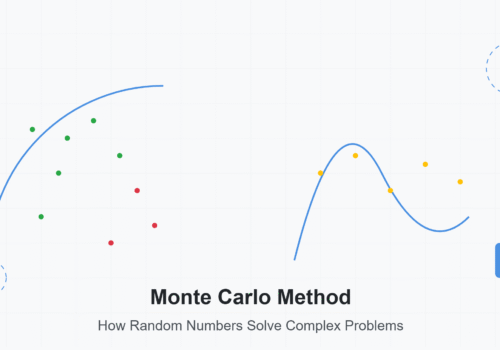Designing with the End in Mind: The Prepress Graphic Design Approach
In the fast-paced world of graphic design, where creativity meets technology, it’s essential to create designs that not only look visually appealing but also translate seamlessly into various print and digital mediums. The prepress graphic design approach is a strategy that places a strong emphasis on “designing with the end in mind.” This approach involves considering every aspect of the design process, from conception to the final printed or digital product. In this article, we’ll delve into the nuances of the prepress graphic design approach and explore how it contributes to producing high-quality, versatile, and effective designs.
Table of Contents
- Introduction: The Fusion of Creativity and Practicality
- Understanding Prepress Graphic Design
- What is Prepress?
- The Role of Graphic Design in Prepress
- Benefits of the Prepress Graphic Design Approach
- Ensuring Consistency Across Platforms
- Minimizing Printing Errors and Costs
- Steps in the Prepress Graphic Design Process
- Ideation and Conceptualization
- Selecting the Right Color Profiles
- Typography Considerations for Print and Digital
- Image Resolution and Formats
- Mockups and Prototyping
- Collaborating with Printers and Developers
- Bridging the Gap Between Design and Production
- Communication is Key
- Adapting to Technological Advancements
- Prepress Checklist: A Designer’s Best Friend
- Double-Checking Image Resolution
- CMYK vs. RGB: Knowing When to Use Which
- Proofreading Text and Content
- Future-Proofing Your Designs
- Creating Designs for Scalability
- Embracing Sustainable Design Practices
- Conclusion: Crafting Designs That Stand the Test of Time
Introduction: The Fusion of Creativity and Practicality
In a world saturated with visuals, the role of graphic design has expanded beyond aesthetics. Designers are now challenged to create visuals that not only capture attention but also effectively communicate a message. The prepress graphic design approach acknowledges this shift and emphasizes the importance of considering the final output during the design process.
Understanding Prepress Graphic Design
What is Prepress?
Prepress refers to the process of preparing digital files for printing. It involves optimizing the design for printing, ensuring color accuracy, and addressing any technical issues that may arise during the printing process.
The Role of Graphic Design in Prepress
Graphic design plays a pivotal role in prepress by determining how the visual elements will be arranged and presented. The prepress graphic design approach focuses on creating designs that can seamlessly transition from the screen to the final printed material.
Benefits of the Prepress Graphic Design Approach
Ensuring Consistency Across Platforms
Design consistency is vital for brand identity. The prepress graphic design approach ensures that the visual elements, such as colors, fonts, and layouts, remain consistent across different mediums.
Minimizing Printing Errors and Costs
By considering the technical requirements of printing during the design phase, the prepress approach reduces the likelihood of errors and the need for costly reprints.
Steps in the Prepress Graphic Design Process
Ideation and Conceptualization
The journey begins with brainstorming and conceptualizing ideas that align with the project’s goals and target audience.
Selecting the Right Color Profiles
Choosing appropriate color profiles, such as CMYK for print and RGB for digital, ensures accurate color reproduction.
Typography Considerations for Print and Digital
Typography choices are tailored to each medium’s requirements, guaranteeing readability and visual harmony.
Image Resolution and Formats
High-resolution images are selected, and the appropriate formats are chosen to maintain image quality.
Mockups and Prototyping
Creating mockups and prototypes provides a tangible preview of the final product, aiding in design refinement.
Collaborating with Printers and Developers
Open communication with printers and developers ensures a smooth transition from design to production.
Bridging the Gap Between Design and Production
Communication is Key
Efficient communication between designers, printers, and developers prevents misunderstandings and technical issues.
Adapting to Technological Advancements
Staying updated with technological advancements enables designers to utilize new tools for better results.
Prepress Checklist: A Designer’s Best Friend
Double-Checking Image Resolution
High-resolution images prevent pixelation and ensure quality output.
CMYK vs. RGB: Knowing When to Use Which
Understanding the color modes helps in selecting the appropriate one for each medium.
Proofreading Text and Content
Thoroughly proofreading content minimizes errors that can affect the final output.
Future-Proofing Your Designs
Creating Designs for Scalability
Designs are crafted to be scalable, allowing for various applications without compromising quality.
Embracing Sustainable Design Practices
Sustainable design reduces environmental impact and aligns with responsible business practices.
Conclusion: Crafting Designs That Stand the Test of Time
The prepress graphic design approach is a testament to the evolution of graphic design. By considering the end product from the very beginning, designers create visuals that are not only captivating but also adaptable and reliable. Incorporating this approach into the design process ensures that every design is optimized for its intended medium, guaranteeing consistent and outstanding results.
FAQs
Q1: What is the prepress graphic design approach?
The prepress graphic design approach involves considering the final output during the design process to create visuals that seamlessly transition from screen to print or digital media.
Q2: How does prepress benefit the design process?
Prepress minimizes errors, reduces printing costs, and ensures design consistency across different platforms.
Q3: What is the role of typography in prepress?
Typography is adapted to each medium’s requirements for optimal readability and visual appeal.
Q4: Why is communication important in bridging design and production?
Efficient communication with printers and developers prevents technical issues and ensures a smooth production process.
Q5: How does future-proofing designs contribute to sustainability?
Creating scalable designs and embracing sustainable practices reduces the need for constant redesigns and minimizes environmental impact.





